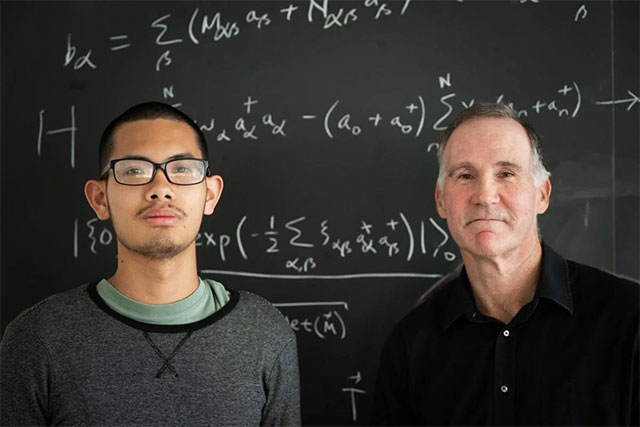Scientists Solve 90-Year-Old Mystery in Quantum Physics: Opening the Era of Ultra-Small Measurements
A team of researchers has found a solution to the seemingly simple phenomenon that has puzzled physicists for nearly a century: the 'damped harmonic oscillator' – a discovery that could pave the way for the world's tiniest measuring devices.
Imagine a guitar string that resonates and then dies out, or a swing that slows down and then stops after a person is removed from it. This is a classic example of damped harmonic oscillation , which is well described by Newton's laws of motion.
However, at the atomic scale, those familiar rules no longer hold. Instead, there are strange principles of quantum mechanics. It is this difference that prompted Professor Dennis Clougherty and his student Nam Dinh (University of Vermont, USA) to ask the question: Can a quantum system vibrate like a string or a swing in real life? If so, how can we build a quantum theory for this phenomenon?
On July 7, 2025, in the journal Physical Review Research , they published their solution. Specifically, the team found the exact mathematical model for a 'quantum mechanical damped harmonic oscillator' – the atomic-scale version of that familiar motion.
The 90-year-old mystery
Over the past century or so, many theorists have tried to describe this phenomenon using quantum mechanics, but have run into difficulties. The problem lies in ensuring the Heisenberg uncertainty principle – the cornerstone of quantum physics, which states that it is impossible to know the exact position and momentum of a particle at the same time.
Interestingly, the original model dates back to 1900, when physicist Horace Lamb wanted to explain how a vibrating particle in a solid loses energy. He used classical mechanics to show that the elastic waves created by the particle would react in the opposite direction, causing the vibrations to weaken. But when translated into the quantum world, this rule is not so obvious.
Clougherty and Dinh took Lamb's idea and redeveloped it within a quantum framework. With support from the National Science Foundation and NASA, they found a way to preserve the uncertainty principle in a complex system of interacting particles.
The solution comes from an advanced mathematical technique called the multimode Bogoliubov transform , which 'de-diagonalizes' the system of equations and fully describes the quantum oscillation motion. The resulting state – a 'multimode squeezed vacuum' – allows quantum noise in one quantity (position) to be reduced by accepting noise in another (momentum).

Practical application
This is not just theoretical. Pinpointing the exact position of an atom opens up the possibility of creating ultra-precise measuring instruments at the quantum level – such as the 'world's smallest tape measure'.
'By reducing uncertainty, we can measure position with precision beyond the conventional quantum threshold,' says Professor Clougherty. This is the same mechanism that led to the development of gravitational wave detectors – technology that can measure length changes smaller than the size of an atomic nucleus, earning the Nobel Prize in 2017.
No one knows for sure what doors this new discovery will open, but it's clear that the Vermont team has just laid the groundwork for a new chapter in understanding and applying quantum mechanics.
You should read it
- Science has found evidence of the immortality of pseudo-particles: they replicate themselves after decay
- New chip technology can enhance quantum computing
- Quantum physics provides new knowledge about the brain
- Quantum computing - a marathon, not a sprint contest!
- What is quantum computing and how did people develop this technology?
- For the first time successfully implementing underwater quantum teleportation, China took the lead in the quantum communication race
 Gold 'survives' at 18,700°C, overturning 40-year-old physics theory
Gold 'survives' at 18,700°C, overturning 40-year-old physics theory What you need to know about the virus that is turning animals into 'zombies'
What you need to know about the virus that is turning animals into 'zombies' Interesting facts about left-handed people
Interesting facts about left-handed people This is how aerosols fly across Earth's sky
This is how aerosols fly across Earth's sky What would humanity be like if they lived in a level 7 civilization?
What would humanity be like if they lived in a level 7 civilization? Mercury can create gold in a fusion reactor
Mercury can create gold in a fusion reactor